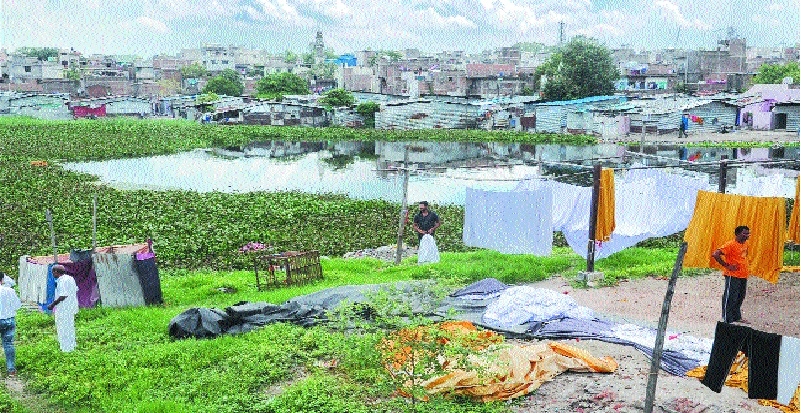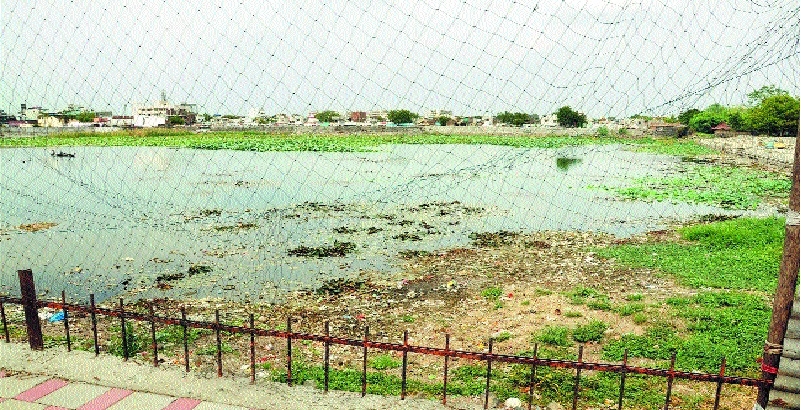Culprits of water crisis in Nagpur
| Date :16-Jul-2019 |

By Vijay Phanshikar
“The city of Nagpore is endowed with many lakes that boast of clear water that quenches the people’s thirst and keeps the place green and cool all round the year. Lush green fields also appear in one’s view as one wanders around the place. There also are forest blocks of different sizes here. The city offers a beautiful setting for a healthy and happy living for the community whose members appear committed to welfare of all. They are seen being careful about one another and about keeping the surroundings clean and free from filth.”
Believed to have been written by a European visitor to ‘Nagpore’ in the early years of the last century, these words make a profound observation about the city of those times. None of these observations is applicable to the city today. Our lakes are dying, as we have been reporting from time to time for decades on end and also during the current campaign. Lush green fields have disappeared in the labyrinth of time, and the few forest patches the city boasted of appear to follow suit. And if this degenartion continues for the next 10-15 years, the city of Nagpur will have nothing to talk about by way of its love for Nature and its conservation and preservation. The biggest grief is that except for a handful few, nobody in Nagpur appears concerned, let alone alarmed. The political leadership, the State bureaucracy, the civic administration, the people’s representatives, and the people themselves appear to have slipped into a dangerous, suicidal and terribly degenerative slumber from whose vice-like grip nobody can awaken them.
That was the reason why ‘The Hitavada’ titled one of the reports in the current campaign about lakes “Once upon a time, there used to be a Dobe Talao”. For, a densely populated ‘Basti’ -- slum area -- stands on the land that hosted the Dobe Talao (lake), a shameless testimony to how a city can conspire to kill its lakes. Yes, this does represent a massive conspiracy -- to kill the lakes and use the land for real estate development. And if anybody wants to blame ‘The Hitavada’ for being an uncalled for alarmist, then we advise him or her to read carefully our reportage of how the lakes in our city are meeting with a slow but sure death in the next few years. We also urge him or her to travel around in the city to see what we are doing to our waterbodies -- the lakes and the rivers Nag, Pili, and Pohra. We also urge him or her to get convinced with the actual evidence of the people’s diabolical plan to kill waterbodies, and then confront the city’s political and administrative leadership and also the people in general with hard facts.

After having studied the situation in great detail, we are convinced today -- most unfortunately -- that almost every waterbody in our sprawling city is on the verge of dying in the next sometime. Until a few years ago, the environmental activists used to feel happy that at least the Gorewada lake -- way beyond Nagpur’s outskirts -- was safe from people’s ugly influence. But that boast has no meaning today. Just a few weeks ago, ‘The Hitavada’ published detailed reports of how the Gorewada lake, too, was becoming victim of the apathy of the people and their government and civic administration. Nature-lovers realised much to their disgust and disappointment that the Gorewada lake, too, was being used as a dumping yard for all sorts of rubbish and garbage. Small armies of Nature-lovers, then, descended upon the lake’s surroundings and tried to clean up the garbage by truck-loads. Yet, nobody can guarantee how safe and secure the Gorewada will be in the next few years.
In fact, Gorewada lake is a critical link between one of the city’s main source of water -- the Pench reservoir -- and the city should have kept it free from any pollution and degeneration. Much to the contrary, the place now offers a damning evidence of how the Gorewada lake, too, is being subjected to a slow poison from whose throes nobody would be able to save it. All the waterbodies -- the Ambazari Lake, the Telangkhedi (Futala) Lake, the Sakkardara Lake, the Naik Lake (Talao), the Lendi Lake (Talao), the Binaki Mangalwari Lake, the Nag River, the Pili River, the Pohra River -- in the city suffer from terrible neglect at all levels and from all groups of stake-holders. In fact, everybody knows this sad fact. Yet, nobody is willing to pause and ponder and then stop the plunder of thecity’s waterbodies. This is very frustrating, very disgusting, and almost pushing the Nature-loving citizens to think of resorting to extreme methods of making their point in favour of waterbodies. But the moot question is: Who will pin down the culprits first to make a beginning of recovery from the collective apathy of a criminal nature? And by the way, aren’t all of us the actual culprits, in lesser or greater degrees?